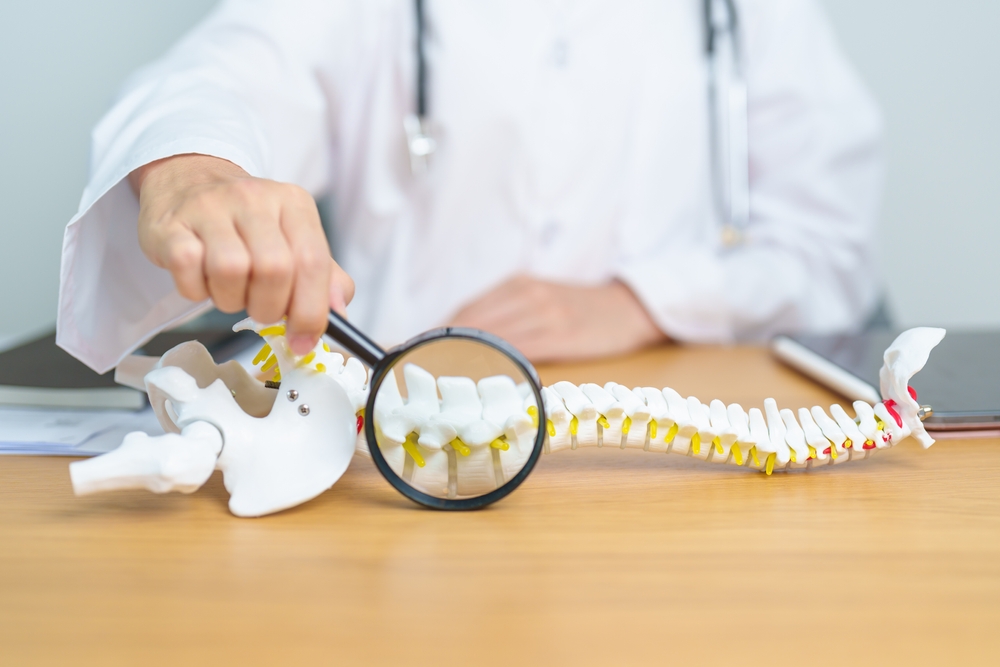
Understanding Disc Desiccation: What You Need to Know
Today, we’re diving into a common but often misunderstood topic in spine health: disc desiccation. If you’ve ever experienced back pain or have concerns about your spine health, understanding disc desiccation is crucial. Let’s break it down in simple terms.
What is Disc Desiccation?
Disc desiccation refers to the drying out or dehydration of the spinal discs. Now, you might be wondering, what are these spinal discs? Well, think of them as cushions or shock absorbers between the vertebrae (the bones) in your spine. They’re made up of a tough outer layer called the annulus fibrosus and a gel-like inner core known as the nucleus pulposus.
Causes of Disc Desiccation:
Several factors can contribute to disc desiccation:
- Aging: As we get older, the discs naturally lose moisture and elasticity, making them more prone to desiccation.
- Poor Posture: Sitting or standing in a slouched position for prolonged periods can put pressure on the spinal discs, leading to dehydration over time.
- Trauma or Injury: Accidents, repetitive strain, or injuries to the spine can accelerate disc degeneration and desiccation.
- Smoking: Believe it or not, smoking can affect disc health by reducing blood flow to the spinal discs, which impairs their ability to absorb nutrients and stay hydrated.
Symptoms of Disc Desiccation:
Disc desiccation itself may not cause noticeable symptoms. However, if it progresses, it can contribute to other spine-related issues such as:
- Back Pain: Desiccated discs may lose their ability to cushion the spine effectively, leading to chronic or intermittent back pain.
- Reduced Flexibility: Stiffness and reduced range of motion in the spine can occur as the discs lose their ability to absorb shock.
- Nerve Compression: In severe cases, desiccated discs can bulge or herniate, putting pressure on nearby nerves and causing symptoms like sciatica (pain radiating down the leg).
Treatment Options:
Fortunately, there are various treatment options available to manage disc desiccation and its associated symptoms:
- Physical Therapy: Targeted exercises and stretches can help strengthen the muscles supporting the spine, improve posture, and alleviate pain.
Medications: Over-the-counter or prescription medications may be recommended to manage pain and inflammation associated with disc desiccation. - Lifestyle Modifications: Making changes such as maintaining a healthy weight, practicing good posture and quitting smoking can help slow down the progression of disc degeneration.
- Interventional Procedures: In some cases, procedures like epidural steroid injections or nerve blocks may be recommended to provide temporary pain relief.
- Surgery: Surgery is typically considered a last resort for severe cases of disc desiccation that haven’t responded to conservative treatments. Procedures such as spinal fusion or artificial disc replacement may be recommended.
Disc desiccation is a common part of the aging process, but it can also be influenced by lifestyle factors and injuries. While it may not always cause symptoms, it can contribute to spine-related issues like back pain and reduced flexibility. By understanding the causes, symptoms and treatment options for disc desiccation, you can take proactive steps to maintain a healthy spine and overall well-being.
Remember, if you’re experiencing persistent or severe back pain, it’s essential to consult with a board-certified spine specialist like Dr. Carl P. Giordano and Dr. Richard S. Nachwalter at Atlantic Spine Specialists in Morristown, New Jersey 973.971.3500. They’re dedicated to providing personalized care to help you find relief and get back to enjoying life to the fullest.